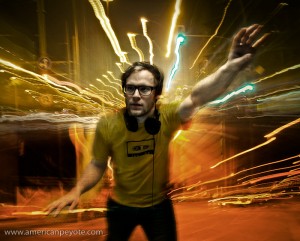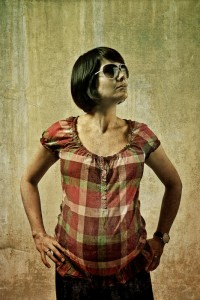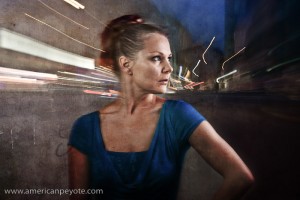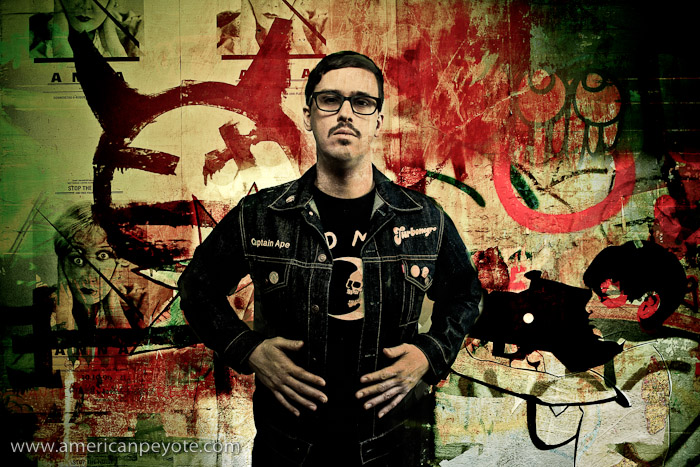 It’s been a fun year of photography so far, and running the Web Portraits Zurich project has given me reason to reflect on the process of making cool portraits of interesting people. I’ve contrasted my findings with the ramblings of professional photographers and teachers of the internet (where I learned a lot abouot photography), and have come to the conclusion that most internet sources don’t really have a handle on the portrait process, or they simply like to focus more on gear and dehumanizing people into subjects with gear talk rather than having a conversation on who is in front of our lenses.
It’s been a fun year of photography so far, and running the Web Portraits Zurich project has given me reason to reflect on the process of making cool portraits of interesting people. I’ve contrasted my findings with the ramblings of professional photographers and teachers of the internet (where I learned a lot abouot photography), and have come to the conclusion that most internet sources don’t really have a handle on the portrait process, or they simply like to focus more on gear and dehumanizing people into subjects with gear talk rather than having a conversation on who is in front of our lenses.
Now, understand, it’s not their fault. It’s not embedded in their DNA. It’s just part of the mystique of this easy-lazy-art-form called photography. Cameras and photo gear became popular because it’s easier to click a shutter on a device than painting a canvas or doing a detailed sketch of what ever it is you’re looking at. When you shoot with a big camera it makes you feel important, but there’s a reason I don’t take myself too seriously. There’s this romanic ideal of photographers being like painters and artists delving with their whole soul into the artistic expression of the portrait. Photographers are expressing the inner soul of humans for all to see in the printed or screen viewed image…however…
 A person is not a subject
A person is not a subject
Simple, and to the point. A lot of folks get into photography because it’s cool – like I did. I drew things in math class because it was interesting, I started with photography and Photoshop because the gear makes it easy. There’s a romantic notion embedded in the collective history of photography of capturing emotions and elements of people, which would otherwise be lost forever as the second-hand ticked over and the present becomes the past and that look is lost forever (unless captured by the photographer). But a person is not a subject. Even models have names and personalities, but photographers sometimes like to ignore those humanizing notions and instead focus on the technical process of focusing light onto an image capture surface (like film or a digital sensor). Afterall, we’re all engineers and poets, painters and scientists. But I like photography because it opens a door to the non-technical side of life. Models are not Barbie dolls. I know of what I speak, for I shoot pictures of Bratz dolls when I just want to photography plastic people. However, this gets boring quickly, and is a subject best suited to those moments when you’re looking for a way to till time but don’t want to sit in front of a television.
Photographing people is distinctly different than taking snapshots of Bratz dolls because with people you now have the opportunity to interact with the person. If you’re into photographing people, then just think of the process as an extended conversation with some visual elements thrown in. When you start saying things like, “I lit my subject with this and that camera and photographed them with an 85mm f1.2 lens…” Well, you’ve lost the point of the conversation. If you listen to professional photographers they’ll tell you to talk to your subject. Get to get to know them, make them feel comfortable. But here’s the thing, small talk like, “what do you do” “what’s your favorite color” “where are you from” is just filler talk. You’re probably doing it so the person doesn’t feel ignored but not because you really want to know who they are. This type of small talk simply says, “I’m just interested in my camera and making an image and you’re just a body…so smile.” This technique can be effective given the right situation. But is that the more interesting way to shoot? Is it more interesting to shoot a Bratz doll (who can’t speak) or to listen to a person and make a picture of them as well?
A Portrait is just Conversation
A photo session is just an extended conversation in my mind, and if you start out talking with people with an authentic voice, then the photo session will just be an extension of that initial, real, emotional connection. If you starting shooting like a pornographer and only start talking when you notice your subject is looking uncomfortable, then the whole positive momentum of the conversation has already been lost and you need to sort of start over. Tripping the shutter is the shortest and least important part of a portrait photo session. But it’s the part that defines the final image. The question is, how does one get up to that point? I Think of the photo session in this way:
 Conversation – Lighting/Set – Picture
Conversation – Lighting/Set – Picture
The more time you take in getting to know a person before you light them with a million-gazillion photons, the more natural the resulting image will be. Or more unnatural, it depends on what you’re trying to achieve, and sometimes every photo session is full of suprises. Once you understand something about the person you’re planning to shoot you can design the lighting (some call this subject driven lighting), build a set or pick a proper location, and then being planning a post-processing philosophy, all before taking any pictures. I like to spend the least amount of time possibly on actually shooting and setting up lighting. The reason is simle, the shutter trip is the most insignificant part of the process if the process was done correctly. Now, maybe you’re going for the whole Stanley Kubrik, make-the-actors-feel-uncomfortable-to-illicit-emotion-from-them deal, but that’s a whole other level of person-photographer interaction. An authentic portrait session starts (and ends) with a conversation.
Most of the technical things about photography I’ve learned from the internet. It’s been a fun time and I’ve learned a lot about light control and lenses and cameras and strange terms like gobos and brolley. But my mind became exhaused and bored with this conent, and I’ve started wondering what else is there. However, when I watch things like creativeLive with Zach Arias or attend a Strobist workshop, I’ve started to notice how technology and lights are always at the forefront, and the whole emotional connection thing is thrown in afterwards, even though people generally admit it’s one of the mose important aspects of the whole process. Those conversations are there, but they’re not focused on in blog articles like David’s article On Assignment: Caleb Jones. Technical side of the shoot is all there, but what was the emotional connection between David and Caleb?
That’s a key element that a photographer like Joey L communicates extremely well in his DVD tutorial (Sessions with Joey L). In his tutorial Joey Lawrence pushes the ideas of trust and emotional connection as being primary, and lighting and camera technology as the secondary elements of a photo shoot (or photo career). This isn’t meant to be a negative critique of Zach Arias or of David Hobby (but it could be viewd as an encouragement or suggestion). The latter two (and internet icons like Chase Jarvis) are just responding to what sells. People love the technology of photography, the lenses, bodies, radio triggers, flashes, etc. People drop big bucks on technology and then wonder why their pictures look lifeless and ordinary when they know the person has a soul and interesting story to tell (like we all do). The thing I love about the Vincent Laforet CreativeLive workshop is that he started out talking about the philosophy behind movies, the story telling and emotional elements, and then got into the gear talk. It sets your head in the right mind-set, to tell a story and to make a connection to the viewers or consumers of the media product you’re producing. That’s not to say I miss the gear talk, it just gets boring after a while.
 I love photo gear. I have more cameras than Onitsuka tigers and picked my last apartment based on how I could setup a photo studio. One reason I started the Web Portraits Zurich project was to do emotionally-driven portraits of people (I know that sounds a tad pretentious). I wanted to setup a process of including the emotion of the person in their portrait. I wanted to portray people including elements of how they perceive themselves. I shoot the web portraits based first around the person, and then as a secondary condition around lighting and Photoshop. For each portrait set we start out with a concept meeting, the people I’m shooting get to know me and I start to understand how they see themselves. This is the grounding for the whole photo session, and I see the whole process as one long conversation with some camera equipment and photoshop thrown in as an after-thought.
I love photo gear. I have more cameras than Onitsuka tigers and picked my last apartment based on how I could setup a photo studio. One reason I started the Web Portraits Zurich project was to do emotionally-driven portraits of people (I know that sounds a tad pretentious). I wanted to setup a process of including the emotion of the person in their portrait. I wanted to portray people including elements of how they perceive themselves. I shoot the web portraits based first around the person, and then as a secondary condition around lighting and Photoshop. For each portrait set we start out with a concept meeting, the people I’m shooting get to know me and I start to understand how they see themselves. This is the grounding for the whole photo session, and I see the whole process as one long conversation with some camera equipment and photoshop thrown in as an after-thought.
A person is not just a subject
A photo shoot is just an extended conversation
